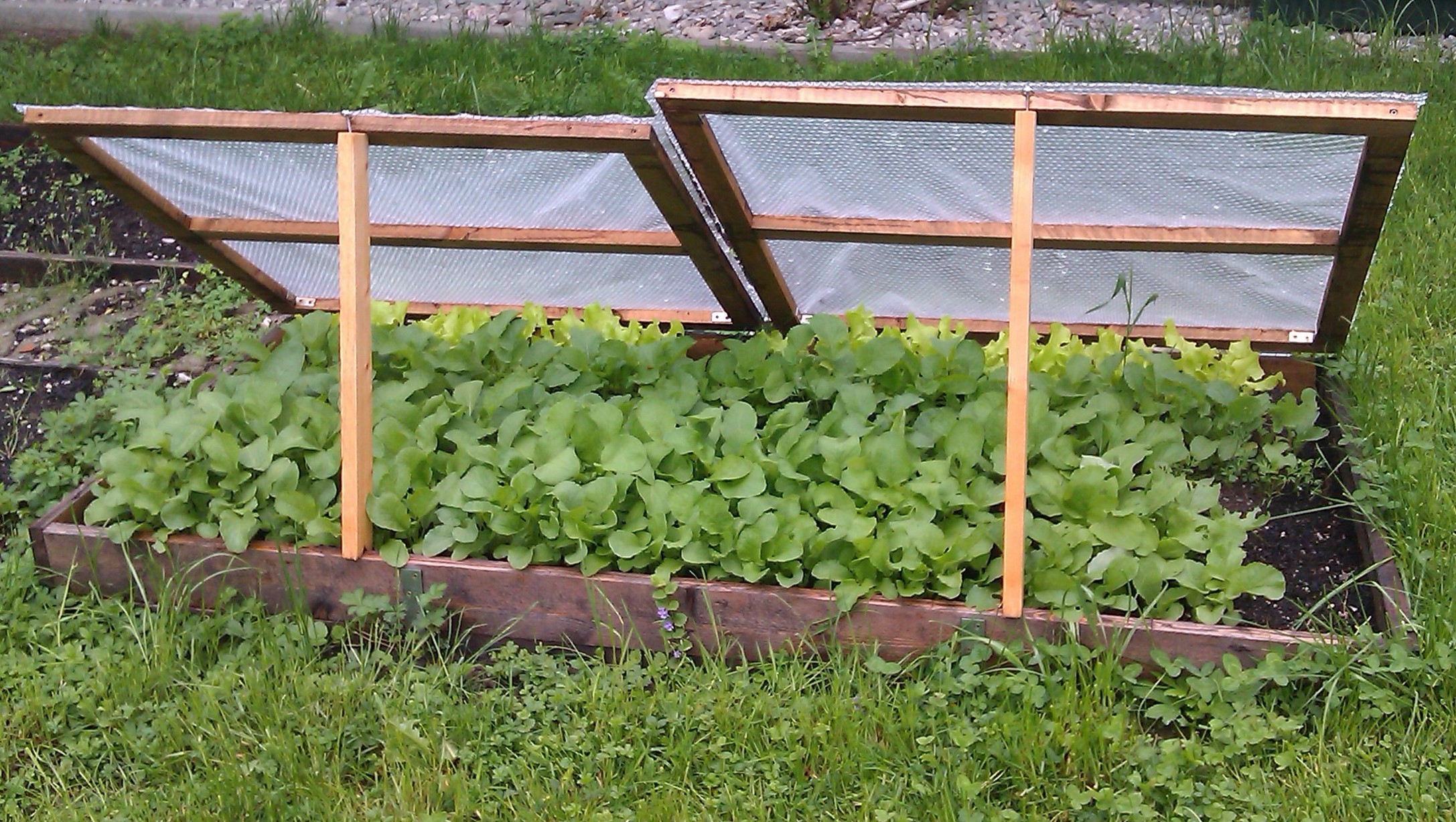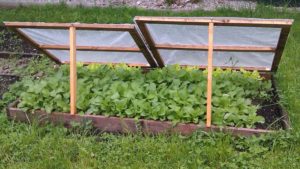Cold Framing 101
A backyard cold frame can extend the harvest or give you a jump start on the season.
By Thomas Christopher
It’s not often that I can claim my garden rivals those of despots, but in at least one respect I have equaled the emperor Tiberius of ancient Rome. Tiberius’ reign (14-37 A.D.) was in many ways an evil one but it did include the first recorded use of the cold frame. When his physicians advised the emperor that he should eat cucumbers on a daily basis, he passed along word to his gardeners that he thereafter expected a year-round harvest. The gardeners employed a number of expedients to keep cucumber vines fruiting through the winter; among them was a south-facing frame glazed with sheets of semi-transparent mica that captured heat from the sun to keep the soil and air inside warmer during frosty days.
I myself preferred to employ a sheet of polycarbonate plastic I ordered from a greenhouse supply company. That’s what I used to cap the sloped wooden frame I built to fit over an 8’x4’ bed in my front yard. I attached the double-walled sheet of polycarbonate with hinges so that I could tip it up and cool the interior of this new cold frame on warm days. To do this in a timely fashion required constant attention, so eventually, I ordered an inexpensive automatic vent opener from the same greenhouse supply company; a sort of jointed arm that expanded in the heat, this opened the lid for me whenever the temperature inside my new cold frame rose to around 60° F.
Once I had completed my tinkering, I was able to continue salad harvests much later into the fall, and start seedlings long before the last frost in the spring. Indeed, with the help of tips from Eliot Coleman’s book, The New Organic Grower’s Four Season Harvest (Chelsea Green Publishing Company, 1992), I was able to harvest greens almost continuously through the winter. Coleman, who gardens in coastal Maine, in USDA zone 5, has actually accomplished this feat with carefully timed plantings. His strategy is based on the recognition that little growth, at least in the north, will occur during the cold, dark days of mid-winter. However, plantings of crops such as spinach, carrot, and radicchio made in late summer to early fall will mature before winter dormancy settles in and they will persist to provide pickings until the weather starts to warm in spring. Using the schedules I found in Coleman’s book (they were reprised in greater detail in his 2009 publication, The Winter Harvest Handbook), I was able to duplicate his success.
Coleman recommends filling the spots vacated by harvests by planting again from mid-January to provide early spring harvests of lettuce, peas, radishes and spinach. Flower gardeners will find a cold frame useful for getting a head start on spring sowings of annuals and for hardening off seedlings started indoors.
Ready-made cold frames are available from any number of mail order garden supply retailers, but it is easy enough to cobble one together yourself. I made mine from 2-inch thick, construction grade Douglas fir lumber and that polycarbonate sheet, but I’ve even seen plans for an impromptu cold frame constructed from a rectangular enclosure of straw bales roofed with an old shower door or recycled storm windows. A good starting point for building your own would be to examine the plans for an elegant homemade cold frame Eliot Coleman included in Four Season Harvest.
As this guru of winter gardening puts it, the cold frame “is the simplest, most flexible, and most successful low-tech tool for modifying the garden climate.” The cold frame worked forthe emperor Tiberius (and me). It can work for you.
Thomas Christopher is the co-author of “Garden Revolution” (Timber Press, 2016) and is a volunteer at Berkshire Botanical Garden. berkshirebotanical.org
Be-a-Better-Gardener is a community service of Berkshire Botanical Garden, one of the nation’s oldest botanical gardens in Stockbridge, MA. Its mission to provide knowledge of gardening and the environment through 25 display gardens and a diverse range of classes informs and inspires thousands of students and visitors on horticultural topics every year. Thomas Christopher is the co-author of Garden Revolution (Timber press, 2016) and is a volunteer at Berkshire Botanical Garden. berkshirebotanical.org.




